Spatial
Visit to download the full and correct content document: https://ebookmass.com/product/spatial-analysis-john-t-kent/
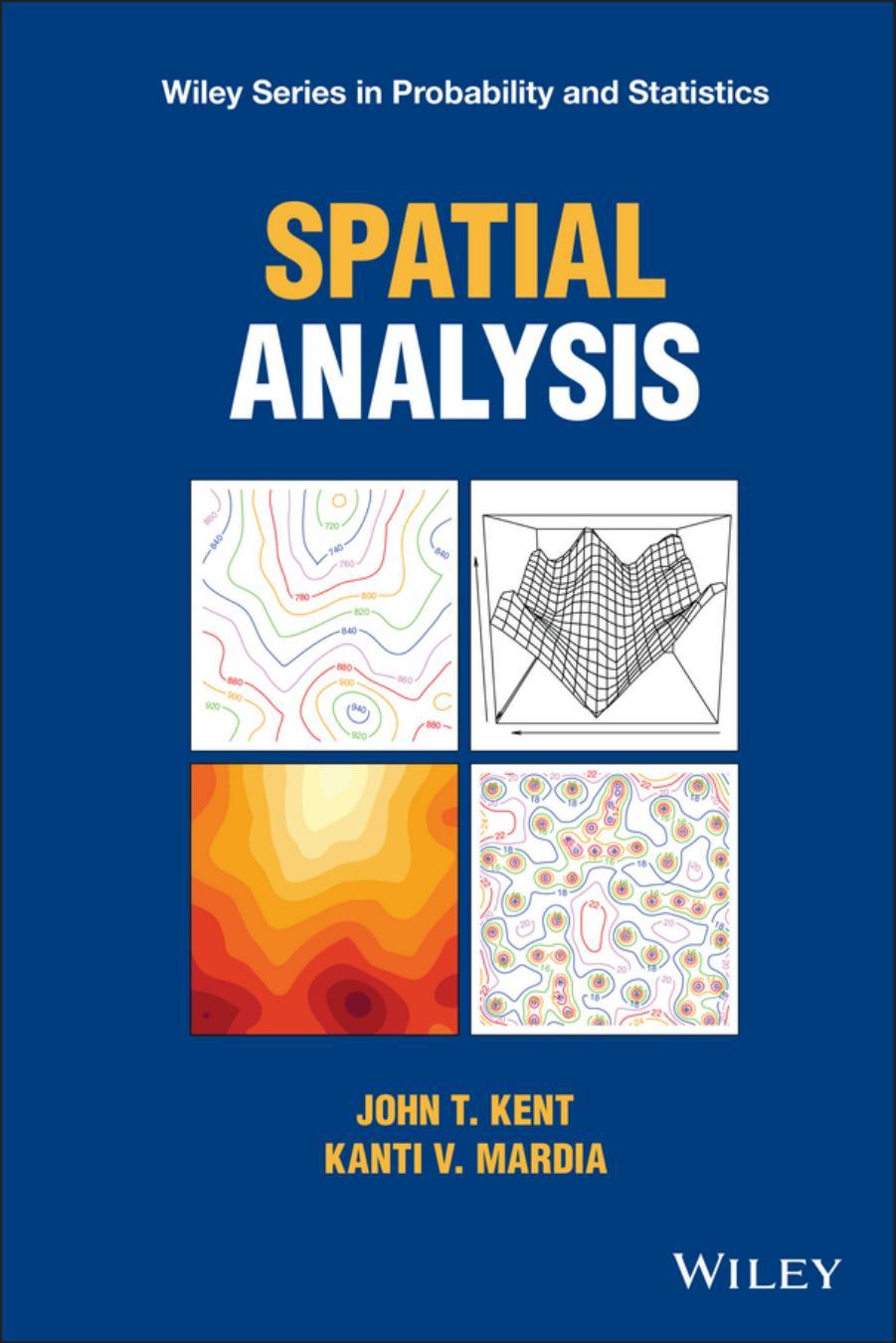
More products digital (pdf, epub, mobi) instant download maybe you interests ...
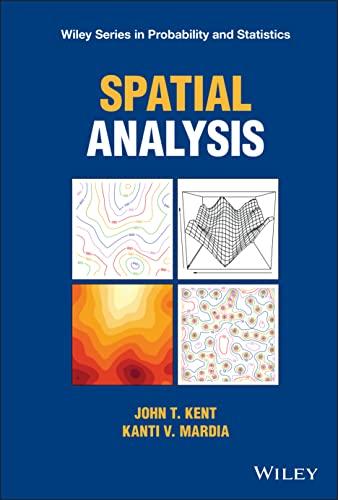
Spatial Analysis John T. Kent
https://ebookmass.com/product/spatial-analysis-john-t-kent-2/
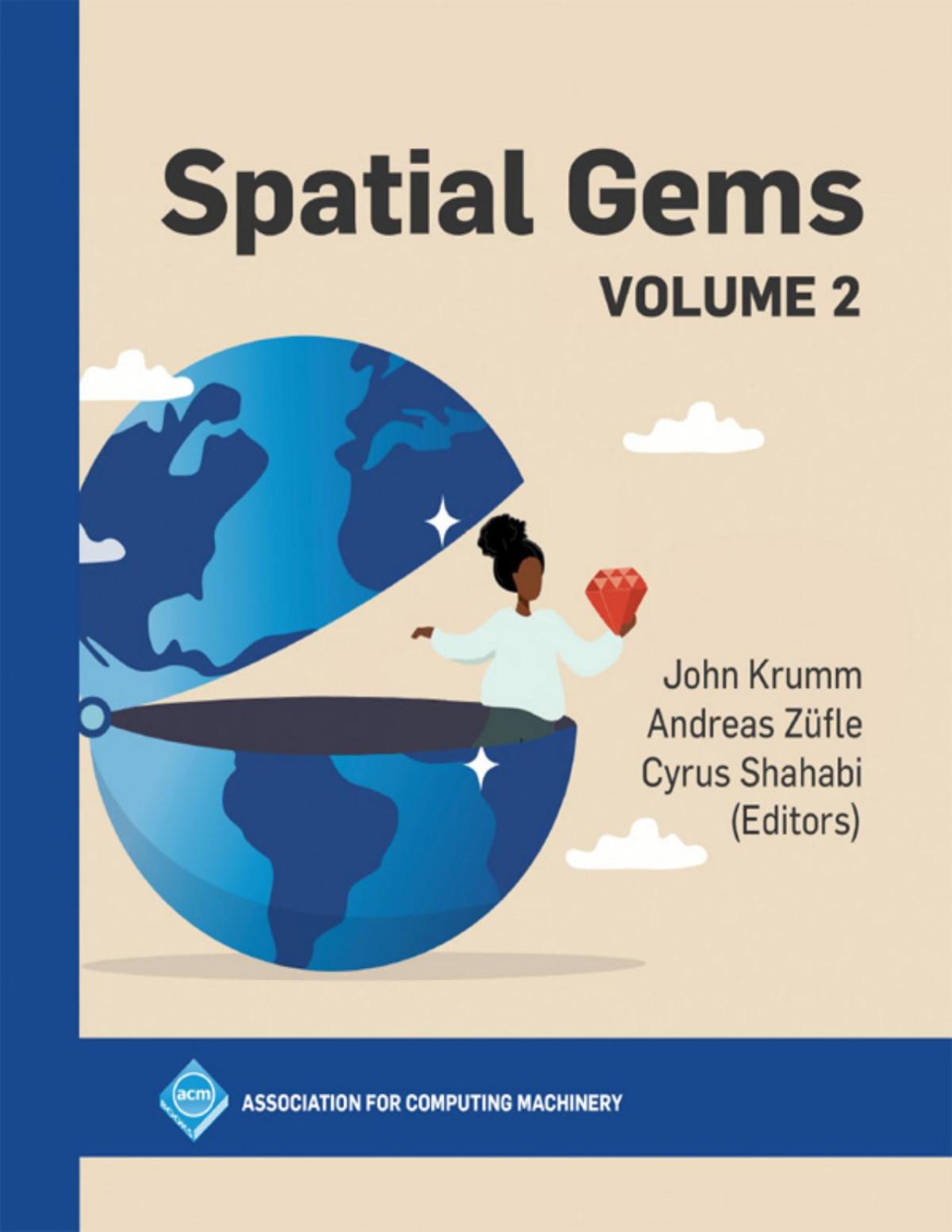
Spatial Gems: Volume 2 John Krumm
https://ebookmass.com/product/spatial-gems-volume-2-john-krumm/
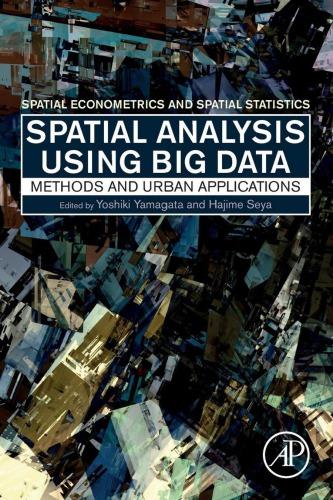
Spatial analysis using big data: methods and urban applications Yamagata
https://ebookmass.com/product/spatial-analysis-using-big-datamethods-and-urban-applications-yamagata/
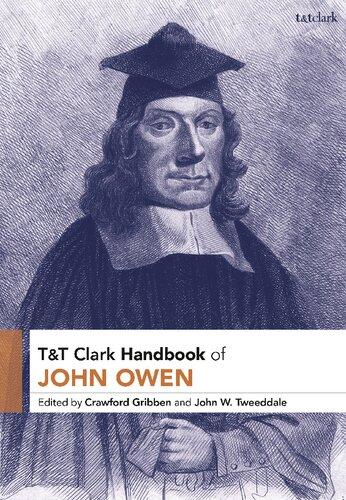
T&T Clark Handbook of John Owen Crawford Gribben
https://ebookmass.com/product/tt-clark-handbook-of-john-owencrawford-gribben/
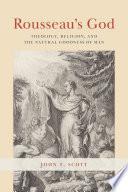
Rousseau's God John T. Scott
https://ebookmass.com/product/rousseaus-god-john-t-scott/
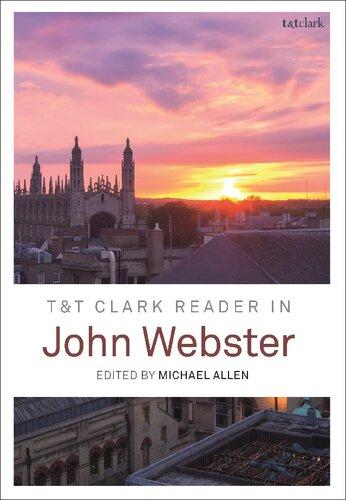
T&T Clark Reader in John Webster Michael Allen (Editor)
https://ebookmass.com/product/tt-clark-reader-in-john-webstermichael-allen-editor/

Populism and Trade Kent Jones [Kent Jones]
https://ebookmass.com/product/populism-and-trade-kent-jones-kentjones/
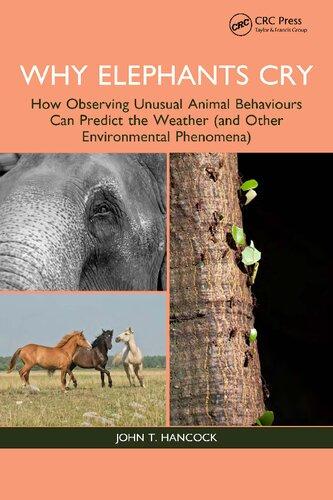
Why Elephants Cry John T. Hancock
https://ebookmass.com/product/why-elephants-cry-john-t-hancock/
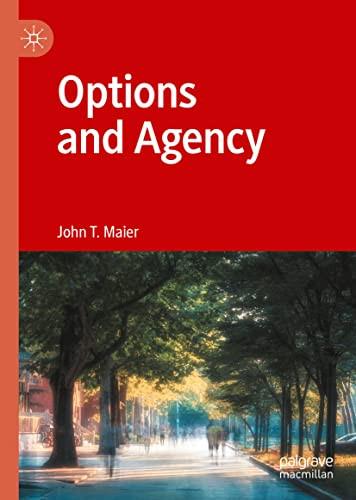
Options and Agency John T. Maier
https://ebookmass.com/product/options-and-agency-john-t-maier/
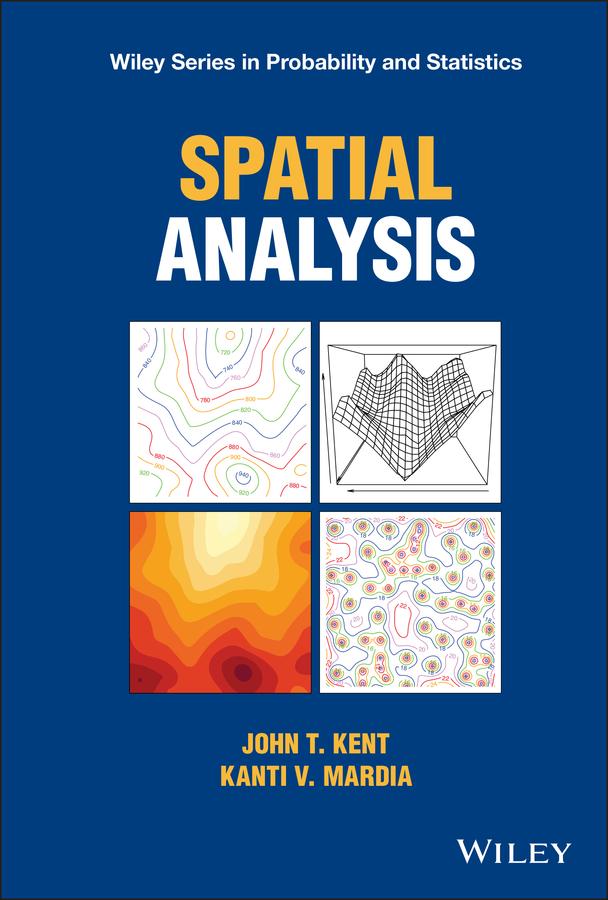
SpatialAnalysis
WILEYSERIESINPROBABILITYANDSTATISTICS
Establishedby WalterA.ShewhartandSamuelS.Wilks
The WileySeriesinProbabilityandStatistics iswellestablishedand authoritative.Itcoversmanytopicsofcurrentresearchinterestinbothpureand appliedstatisticsandprobabilitytheory.Writtenbyleadingstatisticiansand institutions,thetitlesspanbothstate-of-the-artdevelopmentsinthefieldand classicalmethods.
Reflectingthewiderangeofcurrentresearchinstatistics,theseriesencompasses applied,methodologicalandtheoreticalstatistics,rangingfromapplicationsand newtechniquesmadepossiblebyadvancesincomputerizedpracticetorigorous treatmentoftheoreticalapproaches.
Thisseriesprovidesessentialandinvaluablereadingforallstatisticians,whether inacademia,industry,government,orresearch.
SpatialAnalysis
JohnT.Kent
UniversityofLeeds,UK
KantiV.Mardia
UniversityofLeeds,UK
UniversityofOxford,UK
Thiseditionfirstpublished2022
©2022JohnWileyandSonsLtd
Allrightsreserved.Nopartofthispublicationmaybereproduced,storedinaretrievalsystem, ortransmitted,inanyformorbyanymeans,electronic,mechanical,photocopying,recordingor otherwise,exceptaspermittedbylaw.Adviceonhowtoobtainpermissiontoreusematerial fromthistitleisavailableathttp://www.wiley.com/go/permissions.
TherightofJohnT.KentandKantiV.Mardiatobeidentifiedastheauthorsofthisworkhas beenassertedinaccordancewithlaw.
RegisteredOffices
JohnWiley&Sons,Inc.,111RiverStreet,Hoboken,NJ07030,USA JohnWiley&SonsLtd,TheAtrium,SouthernGate,Chichester,WestSussex,PO198SQ,UK
EditorialOffice
9600GarsingtonRoad,Oxford,OX42DQ,UK
Fordetailsofourglobaleditorialoffices,customerservices,andmoreinformationaboutWiley productsvisitusatwww.wiley.com.
Wileyalsopublishesitsbooksinavarietyofelectronicformatsandbyprint-on-demand.Some contentthatappearsinstandardprintversionsofthisbookmaynotbeavailableinother formats.
LimitofLiability/DisclaimerofWarranty
Thecontentsofthisworkareintendedtofurthergeneralscientificresearch,understanding,and discussiononlyandarenotintendedandshouldnotberelieduponasrecommendingor promotingscientificmethod,diagnosis,ortreatmentbyphysiciansforanyparticularpatient.In viewofongoingresearch,equipmentmodifications,changesingovernmentalregulations,and theconstantflowofinformationrelatingtotheuseofmedicines,equipment,anddevices,the readerisurgedtoreviewandevaluatetheinformationprovidedinthepackageinsertor instructionsforeachmedicine,equipment,ordevicefor,amongotherthings,anychangesinthe instructionsorindicationofusageandforaddedwarningsandprecautions.Whilethepublisher andauthorshaveusedtheirbesteffortsinpreparingthiswork,theymakenorepresentationsor warrantieswithrespecttotheaccuracyorcompletenessofthecontentsofthisworkand specificallydisclaimallwarranties,includingwithoutlimitationanyimpliedwarrantiesof merchantabilityorfitnessforaparticularpurpose.Nowarrantymaybecreatedorextendedby salesrepresentatives,writtensalesmaterialsorpromotionalstatementsforthiswork.Thefact thatanorganization,website,orproductisreferredtointhisworkasacitationand/orpotential sourceoffurtherinformationdoesnotmeanthatthepublisherandauthorsendorsethe informationorservicestheorganization,website,orproductmayprovideorrecommendations itmaymake.Thisworkissoldwiththeunderstandingthatthepublisherisnotengagedin renderingprofessionalservices.Theadviceandstrategiescontainedhereinmaynotbesuitable foryoursituation.Youshouldconsultwithaspecialistwhereappropriate.Further,readers shouldbeawarethatwebsiteslistedinthisworkmayhavechangedordisappearedbetween whenthisworkwaswrittenandwhenitisread.Neitherthepublishernorauthorsshallbe liableforanylossofprofitoranyothercommercialdamages,includingbutnotlimitedto special,incidental,consequential,orotherdamages.
LibraryofCongressCataloging-in-PublicationDataappliedfor ISBN9780471632054(hardback);ISBN9781118763568(adobepdf); ISBN9781118763575(epub);9781118763551(obook)
CoverDesign:Wiley
CoverImages:CourtesyofJohnKentandKantiMardia Setin9.5/12.5ptSTIXTwoTextbyStraive,Chennai,India 10987654321
Tomywife Sue forallherpatienceduringthemanyyearsithastakento completethebook (JohnKent)
Tomyson Hemant anddaughter-in-law Preeti —withJainness
(KantiMardia)
“Whateverthereisinallthethreeworlds,whicharepossessedofmoving andnon-movingbeings,cannotexistasapartfromthe ‘Ganita’ (mathematics/statistics).”
AcharyaMahavira(Jainmonk,AD850)
Contents
ListofFigures xiii
ListofTables xvii
Preface xix
ListofNotationandTerminology xxv
1Introduction 1
1.1SpatialAnalysis 1
1.2PresentationoftheData 2
1.3Objectives 9
1.4TheCovarianceFunctionandSemivariogram 11
1.4.1GeneralProperties 11
1.4.2RegularlySpacedData 13
1.4.3IrregularlySpacedData 14
1.5BehavioroftheSampleSemivariogram 16
1.6SomeSpecialFeaturesofSpatialAnalysis 22 Exercises 27
2StationaryRandomFields 31
2.1Introduction 31
2.2SecondMomentProperties 32
2.3PositiveDefinitenessandtheSpectralRepresentation 34
2.4IsotropicStationaryRandomFields 36
2.5ConstructionofStationaryCovarianceFunctions 41
2.6MatérnScheme 43
2.7OtherExamplesofIsotropicStationaryCovarianceFunctions 45
2.8ConstructionofNonstationaryRandomFields 48
2.8.1RandomDrift 48
2.8.2Conditioning 49
2.9Smoothness 49
2.10Regularization 51
2.11LatticeRandomFields 53
2.12TorusModels 56
2.12.1ModelsontheContinuousTorus 56
2.12.2ModelsontheLatticeTorus 57
2.13Long-rangeCorrelation 58
2.14Simulation 61
2.14.1GeneralPoints 61
2.14.2TheDirectApproach 61
2.14.3SpectralMethods 62
2.14.4CirculantMethods 66 Exercises 67
3IntrinsicandGeneralizedRandomFields 73
3.1Introduction 73
3.2IntrinsicRandomFieldsofOrder k = 0 74
3.3CharacterizationsofSemivariograms 80
3.4HigherOrderIntrinsicRandomFields 83
3.5RegistrationofHigherOrderIntrinsicRandomFields 86
3.6GeneralizedRandomFields 87
3.7GeneralizedIntrinsicRandomFieldsofIntrinsicOrder k ≥ 0 91
3.8SpectralTheoryforIntrinsicandGeneralizedProcesses 91
3.9RegularizationforIntrinsicandGeneralizedProcesses 95
3.10Self-Similarity 96
3.11Simulation 100
3.11.1GeneralPoints 100
3.11.2TheDirectMethod 101
3.11.3SpectralMethods 101
3.12DispersionVariance 102 Exercises 104
4AutoregressionandRelatedModels 115
4.1Introduction 115
4.2Background 118
4.3MovingAverages 120
4.3.1LatticeCase 120
4.3.2ContinuouslyIndexedCase 121
4.4FiniteSymmetricNeighborhoodsoftheOriginin ℤd 122
4.5SimultaneousAutoregressions(SARs) 124
4.5.1LatticeCase 124
4.5.2ContinuouslyIndexedRandomFields 125
4.6ConditionalAutoregressions(CARs) 127
4.6.1StationaryCARs 128
4.6.2IteratedSARsandCARs 130
4.6.3IntrinsicCARs 131
4.6.4CARsonaLatticeTorus 132
4.6.5FiniteRegions 132
4.7LimitsofCARModelsUnderFineLatticeSpacing 134
4.8UnilateralAutoregressionsforLatticeRandomFields 135
4.8.1Half-spacesin ℤd 135
4.8.2UnilateralModels 136
4.8.3QuadrantAutoregressions 139
4.9MarkovRandomFields(MRFs) 140
4.9.1TheSpatialMarkovProperty 140
4.9.2TheSubsetExpansionoftheNegativePotentialFunction 143
4.9.3CharacterizationofMarkovRandomFieldsinTermsofCliques 145
4.9.4Auto-models 147
4.10MarkovMeshModels 149
4.10.1Validity 149
4.10.2Marginalization 150
4.10.3MarkovRandomFields 150
4.10.4Usefulness 151 Exercises 151
5EstimationofSpatialStructure 159
5.1Introduction 159
5.2PatternsofBehavior 160
5.2.1One-dimensionalCase 160
5.2.2Two-dimensionalCase 161
5.2.3NuggetEffect 162
5.3Preliminaries 164
5.3.1DomainoftheSpatialProcess 164
5.3.2ModelSpecification 164
5.3.3SpacingofData 165
5.4ExploratoryandGraphicalMethods 166
5.5MaximumLikelihoodforStationaryModels 168
5.5.1MaximumLikelihoodEstimates–KnownMean 169
5.5.2MaximumLikelihoodEstimates–UnknownMean 171
5.5.3FisherInformationMatrixandOutfillAsymptotics 172
5.6ParameterizationIssuesfortheMatérnScheme 173
5.7MaximumLikelihoodExamplesforStationaryModels 174
5.8RestrictedMaximumLikelihood(REML) 179
5.9Vecchia’sCompositeLikelihood 180
5.10REMLRevisitedwithCompositeLikelihood 182
5.11SpatialLinearModel 185
5.11.1MLEs 186
5.11.2OutfillAsymptoticsfortheSpatialLinearModel 188
5.12REMLfortheSpatialLinearModel 188
5.13IntrinsicRandomFields 189
x Contents
5.14InfillAsymptoticsandFractalDimension 192 Exercises 195
6EstimationforLatticeModels 201
6.1Introduction 201
6.2SampleMoments 203
6.3TheAR(1)Processon ℤ 205
6.4MomentMethodsforLatticeData 208
6.4.1MomentMethodsforUnilateralAutoregressions(UARs) 209
6.4.2MomentEstimatorsforConditionalAutoregression(CAR)Models 210
6.5ApproximateLikelihoodsforLatticeData 212
6.6AccuracyoftheMaximumLikelihoodEstimator 215
6.7TheMomentEstimatorforaCARModel 218 Exercises 219
7Kriging 231
7.1Introduction 231
7.2ThePredictionProblem 233
7.3SimpleKriging 236
7.4OrdinaryKriging 238
7.5UniversalKriging 240
7.6FurtherDetailsfortheUniversalKrigingPredictor 241
7.6.1TransferMatrices 241
7.6.2ProjectionRepresentationoftheTransferMatrices 242
7.6.3SecondDerivationoftheUniversalKrigingPredictor 244
7.6.4ABorderedMatrixEquationfortheTransferMatrices 245
7.6.5TheAugmentedMatrixRepresentationoftheUniversalKriging Predictor 245
7.6.6Summary 247
7.7StationaryExamples 248
7.8IntrinsicRandomFields 253
7.8.1FormulasfortheKrigingPredictorandKrigingVariance 253
7.8.2ConditionallyPositiveDefiniteMatrices 254
7.9IntrinsicExamples 256
7.10SquareExample 258
7.11KrigingwithDerivativeInformation 259
7.12BayesianKriging 262
7.12.1Overview 262
7.12.2DetailsforSimpleBayesianKriging 264
7.12.3DetailsforBayesianKrigingwithDrift 264
7.13KrigingandMachineLearning 266
7.14TheLinkBetweenKrigingandSplines 269
7.14.1NonparametricRegression 269
7.14.2InterpolatingSplines 271
7.14.3CommentsonInterpolatingSplines 273
7.14.4SmoothingSplines 274
7.15ReproducingKernelHilbertSpaces 274
7.16Deformations 275 Exercises 277
8AdditionalTopics 283
8.1Introduction 283
8.2Log-normalRandomFields 284
8.3GeneralizedLinearSpatialMixedModels(GLSMMs) 285
8.4BayesianHierarchicalModelingandInference 286
8.5Co-kriging 287
8.6Spatial–temporalModels 291
8.6.1GeneralConsiderations 291
8.6.2Examples 292
8.7ClampedPlateSplines 294
8.8GaussianMarkovRandomFieldApproximations 295
8.9DesigningaMonitoringNetwork 296 Exercises 298
AppendixAMathematicalBackground 303
A.1DomainsforSequencesandFunctions 303
A.2ClassesofSequencesandFunctions 305
A.2.1FunctionsontheDomain ℝd 305
A.2.2SequencesontheDomain ℤd 305
A.2.3ClassesofFunctionsontheDomain Sd 1 306
A.2.4ClassesofSequencesontheDomain ℤd N ,Where N =(n[1],..., n[d]) 306
A.3MatrixAlgebra 306
A.3.1TheSpectralDecompositionTheorem 306
A.3.2Moore–PenroseGeneralizedInverse 307
A.3.3OrthogonalProjectionMatrices 308
A.3.4PartitionedMatrices 308
A.3.5SchurProduct 309
A.3.6WoodburyFormulaforaMatrixInverse 310
A.3.7QuadraticForms 311
A.3.8ToeplitzandCirculantMatrices 311
A.3.9TensorProductMatrices 312
A.3.10TheSpectralDecompositionandTensorProducts 313
A.3.11MatrixDerivatives 313
A.4FourierTransforms 313
A.5PropertiesoftheFourierTransform 315
A.6GeneralizationsoftheFourierTransform 318
A.7DiscreteFourierTransformandMatrixAlgebra 318
A.7.1DFTin d = 1Dimension 318
A.7.2PropertiesoftheUnitaryMatrix G, d = 1 319
A.7.3CirculantMatricesandtheDFT, d = 1 320
A.7.4TheCase d > 1 321
A.7.5ThePeriodogram 322
A.8DiscreteCosineTransform(DCT) 322
A.8.1One-dimensionalCase 322
A.8.2TheCase d > 1 323
A.8.3IndexingfortheDiscreteFourierandCosineTransforms 323
A.9PeriodicApproximationstoSequences 324
A.10StructuredMatricesin d = 1Dimension 325
A.11MatrixApproximationsforanInverseCovarianceMatrix 327
A.11.1TheInverseCovarianceFunction 328
A.11.2TheToeplitzApproximationto Σ 1 330
A.11.3TheCirculantApproximationto Σ 1 330
A.11.4TheFoldedCirculantApproximationto Σ 1 330
A.11.5CommentsontheApproximations 331
A.11.6Sparsity 332
A.12MaximumLikelihoodEstimation 332
A.12.1GeneralConsiderations 332
A.12.2TheMultivariateNormalDistributionandtheSpatialLinearModel 333
A.12.3ChangeofVariables 335
A.12.4ProfileLog-likelihood 335
A.12.5ConfidenceIntervals 336
A.12.6LinkedParameterization 337
A.12.7ModelChoice 338
A.13BiasinMaximumLikelihoodEstimation 338
A.13.1AGeneralResult 338
A.13.2TheSpatialLinearModel 340
AppendixBABriefHistoryoftheSpatialLinearModelandtheGaussian ProcessApproach 347
B.1Introduction 347
B.2MatheronandWatson 348
B.3GeostatisticsatLeeds1977–1987 349
B.3.1Courses,Publications,EarlyDissemination 349
B.3.2NumericalProblemswithMaximumLikelihood 351
B.4Frequentistvs.BayesianInference 352
ReferencesandAuthorIndex 355 Index 367
ListofFigures
Figure1.1 FingerprintofRAFisher,takenfromMardia’spersonalcollection. AblowupofthemarkedrectangularsectionisgiveninFigure 1.9. 4
Figure1.2 Elevationdata:(a)rawplotgivingtheelevationateachsiteand(b) bubbleplotwherelargerelevationsareindicatedbybigger circles. 6
Figure1.3 Panels(a),(b),and(c)showinterpolatedplotsfortheelevation data,asacontourmap,aperspectiveplot(viewedfromthetopof theregion),andanimageplot,respectively.Panel(d)showsa contourmapofthecorrespondingstandarderrors. 7
Figure1.4 Bauxitedata:(a)rawplotgivingtheoregradeateachsiteand (b)bubbleplotwherelargeroregradesareindicatedbybigger circles. 8
Figure1.5 Landsatdata(200 × 200pixels):imageplot. 9
Figure1.6 SyntheticLandsatdata:imageplot. 10
Figure1.7 Typicalsemivariogram,showingtherange,nuggetvariance,and sill. 12
Figure1.8 Angleconventionforpolarcoordinates.Anglesaremeasured clockwisefromvertical. 16
Figure1.9 Fingerprintsectiondata(218pixelswideby356pixelshigh): (a)imageplotand(b)directionalsemivariograms. 17
Figure1.10 Elevationdata:(a)directionalsemivariogramsand (b)omnidirectionalsemivariogram. 18
Figure1.11 Bauxitedata:(a)directionalsemivariogramsand (b)omnidirectionalsemivariogram. 19
Figure1.12 Directionalsemivariogramsfor(a)theLandsatdataand(b)the syntheticLandsatdata. 19
Figure1.13 Gravimetricdata:(a)bubbleplotand(b)directional semivariograms. 21
Figure1.14 Soildata:(a)bubbleplotand(b)directionalsemivariograms. 22
Figure1.15 Mercer–Hallwheatdata:log–logplotofvariancevs. blocksize. 24
Figure2.1 Matérncovariancefunctionsforvaryingindexparameters. Therangeandscaleparametershavebeenchosensothatthe covariancefunctionsmatchatlags r = |h| = 0and r = 1. 44
Figure3.1 Examplesofradialsemivariograms:thepowerschemes �� # (r )∝ r 2�� for �� = 1∕4, 1∕2andtheexponentialscheme �� # (r )= 1 exp(−r ).Allthesemivariogramshavebeenscaledto takethesamevaluefor r = 2. 83
Figure3.2 Alinearsemivariogramwithanuggeteffect: lim r →0 �� # (r )= 0.3 > 0. 83
Figure4.1 Panels(a)and(b)illustratethefirst-orderbasicandfull neighborhoodsoftheoriginintheplane.Panel(c)illustratesthe second-orderbasicneighborhood. 123
Figure4.2 Threenotionsof“past”oftheoriginin ℤ2 :(a)quadrantpast( ), (b)lexicographicpast( ),and(c)weakpast( ).Ineachplot, ○ denotestheorigin, × denotesasiteinthepast,and • denotesa siteinthefuture. 136
Figure4.3
Figure4.4
(a)First-orderbasicneighborhood(nbhd)oftheorigin ○ in d = 2 dimensions.Neighborsoftheoriginareindicatedby ×.(b)Two typesofcliqueinadditiontosingletoncliques:horizontaland verticaledges. 145
(a)First-orderfullneighborhood(nbhd)oftheorigin ○ in d = 2 dimensions.Neighborsoftheoriginareindicatedby ×.(b)Seven typesofcliqueinadditiontosingletoncliques:horizontaland verticaledges,fourshapesoftriangleandasquare. 146
Figure5.1 Bauxitedata:Bubbleplotanddirectionalsemivariograms. 167
Figure5.2 Elevationdata:Bubbleplotanddirectionalsemivariograms. 168
Figure5.3 Bauxitedata:Profilelog-likelihoodstogetherwith95%confidence intervals.Exponentialmodel,nonuggeteffect. 176
Figure5.4 Bauxitedata:sampleisotropicsemivariogramvaluesandfitted Matérnsemivariogramswithanuggeteffect,for �� = 0.5(solid), �� = 1.5(dashed),and �� = 2.5(dotted). 177
Figure5.5 Elevationdata:Profilelog-likelihoodstogetherwith95% confidenceintervals.Exponentialmodel,nonuggeteffect. 178
Figure5.6 Unilaterallexicographicneighborhoodoffullsize k = 2forlattice data;currentsitemarkedby ×;neighborhoodsitesinthe lexicographicpastmarkedby ○.Othersitesaremarkedbya dot. 184
Figure5.7 Profilelog-likelihoodsforself-similarmodelsofintrinsicorder p = 1,asafunctionoftheindex ��, 0 <��< 2,bothwithouta nuggeteffect(dashedline)andwithanuggeteffect(solidline).In addition,thelog-likelihoodforeach �� ,withtheparameters estimatedbyMINQUE(describedInSection5.13),isshown (dottedline). 191
Figure6.1 Mercer–Halldata:bubbleplot.SeeExample6.1foran interpretation. 211
Figure6.2 Aplotofthesampleandtwofittedcovariancefunctions (“biased-mom-ML”)foraCARmodelfittedtotheleftmost13 columnsoftheMercer–Halldata(Example6.1).Thedatahave beensummarizedbythebiasedsamplecovariancefunction.The fourpanelsshowthecovariancefunctioninthefourprincipal directionswiththesamplecovariances(opencircles)together withthefittedcovariancesusingmomentestimation(solidlines) andmaximumlikelihoodestimation(dashedlines). 212
Figure6.3 Aplotofthesampleandtwofittedcovariancefunctions (“fold-mom-ML”)foraCARmodelfittedtotheleftmost13 columnsoftheMercer–Halldata(Example6.2).Thedatahave beensummarizedbythefoldedsamplecovariancefunction.The fourpanelsshowthecovariancefunctioninthefourprincipal directionswiththesamplecovariances(opencircles)together withthefittedcovariancesusingmomentestimation(solidlines) andmaximumlikelihoodestimation(dashedlines). 215
Figure6.4 RelativeefficiencyofthecompositelikelihoodestimatorinAR(1) modelrelativetotheMLestimator. 220
Figure7.1 Krigingpredictorfor n = 5datapointsassumedtocomefroma stationaryrandomfieldwithasquaredexponentialcovariance function(7.55),withoutanuggeteffect,withmean0.Panels (a)–(c)showthekrigingpredictorforthreechoicesoftherange parameter, �� = 0.1, 10, 100,respectively.Eachpanelshowsthe trueunknownshiftedsinefunction(solid),togetherwiththefitted krigingcurve(dashed),plus/minustwicethekrigingstandard errors(dotted). 249
Figure7.2
Figure7.3
Krigingpredictorfor n = 5datapointsassumedtocomefroma stationaryrandomfieldwithasquaredexponentialcovariance function(7.55),plusanuggeteffect,withmean0.Thesizeofthe relativenuggeteffectinPanels(a)–(c)isgivenby �� = �� 2 ∕(�� 2 + �� 2 )= 0.01, 0.1, 0.5,respectively.Eachpanelshows thetrueunknownshiftedsinefunction(solid),togetherwiththe fittedkrigingcurve(dashed),plus/minustwicethekriging standarderrors(dotted). 250
Panel(a)showstheinterpolatedkrigingsurfacefortheelevation data,asacontourmap.Panel(b)showsacontourmapofthe correspondingkrigingstandarderrors.Thisfigureisalsoincluded inFigure1.3. 251
Figure7.4
Panel(a)showsacontourplotforthekrigedsurfacefittedtothe bauxitedataassumingaconstantmeanandanexponential covariancefunctionfortheerrorterms.Panel(b)showsthesame plotassumingaquadratictrendandindependenterrors.Panels(c) and(d)showthekrigingstandarderrorsforthemodelsin(a)and (b),respectively. 252
Figure7.5 Krigingpredictorandkrigingstandarderrorsfor n = 3datapoints assumedtocomefromanintrinsicrandomfield, ��I (h)=− 1 2 �� 2 |h|, nonuggeteffect.Theintrinsicdriftisconstant.Panel(a):no extrinsicdrift;Panel(b):linearextrinsicdrift.Eachpanelshows thefittedkrigingcurve(solid),plus/minustwicethekriging standarderrors(dashed). 257
Figure7.6
Panel(a)showstheinterpolatedkrigingsurfaceforthegravimetric data,asacontourmap.Panel(b)showsacontourmapofthe correspondingkrigingstandarderrors. 257
Figure7.7 KrigingpredictorsforExample7.6.ForPanel(a),thekriging predictorisbasedonvalueconstraintsatsites1,2,3.ForPanel(b), thekrigingpredictorisadditionallybasedonderivativeconstraints atthesamesites. 262
Figure7.8 Deformationofasquare(a)intoakite(b)usingathin-platespline. Theeffectofthedeformationon ℝ2 canalsobevisualized:itmaps agridofparallellinestoabi-orthogonalgrid. 276
FigureB.1 CreatorsofKriging:DanieKrigeandGeorgesMatheron. 348
FigureB.2 LetterfromMatherontoMardia,dated1990. 350
FigureB.3 TranslationoftheletterfromMatherontoMardia,dated 1990. 351
ListofTables
Table1.1 Illustrativedata xt , t =(t[1], t[2]),ona3 × 4regulargrid, representedinvariousways, n = 12. 3
Table1.2 Elevationdata:elevation x (t) infeetabovethesealevel,where t =(t[1], t[2]), n = 52. 5
Table1.3 Bauxitedata:percentageoregradeforbauxiteat n = 33 locations. 8
Table1.4 Gravimetricdata:localgravitymeasurementsinQuebec, Canada. 20
Table1.5 Semivariogramsineachdirectionforthegravimetricdata. 20
Table1.6 Soildata:surfacepHinCaCl2 onan11 × 11grid. 21
Table1.7 Mercer–Hallwheatyield(inlbs.)for20(rows) × 25(columns) agriculturalplots(MercerandHall,1911),wheretop–bottom correspondstoWest–East,andleft–rightcorrespondsto North–South. 25
Table1.8 AggregatedMercer–Hallwheatdataforplotsaggregatedinto blocks,givingthearraylayoutfortheblocks,theblockdimensions, theblocksize b (numberofplotsineachblock),thenumberof blocks n,andsamplevariance s2 . 26
Table2.1 Someradialcovariancefunctions. 42
Table2.2 SpecialcasesoftheMatérncovariancefunctionin(2.34)for half-integer ��< ∞ withscaleparameter �� 2 = 1. 44
Table2.3 Someexamplesofstationarycovariancefunctions �� (h)= b0 + 2 ∑∞ k=1 bk cos kh onthecircle,togetherwiththeterms bk intheirFourierseries. 57
Table3.1 Self-similarrandomfieldswithspectraldensity f # (��)= �� d 2�� : someparticularcases 98
Table5.1 Parameterestimates(andstandarderrors)forthebauxitedata usingtheMatérnmodelwithaconstantmeanandwithvarious choicesfortheindex �� . 175
Table5.2 Parameterestimates(andstandarderrors)fortheelevationdata usingtheMatérnmodelwithaconstantmeanandwithvarious choicesfortheindex �� 177
Table5.3 Parameterestimates(withstandarderrorsinparentheses)for Vecchia’scompositelikelihoodinExample5.7forthesynthetic Landsatdata,usingdifferentsizesofneighborhood k185
Table7.1 Notationusedforkrigingatthedatasites t1 ,..., tn ,andatthe predictionanddatasites t0 ,..., tn . 235
Table7.2 Variousmethodsofdeterminingthekrigingpredictor ̂ U (t0 )= �� T X , where �� canbedefinedintermsoftransfermatricesby �� = Af 0 + B�� 0 orintermsof �� by �� =[1, �� T ]T . 247
Table7.3 Comparisonbetweentheterminologyandnotationofthisbookfor simplekrigingandRasmussenandWilliams(2006,pp.13–17)for simpleBayesiankriging.Theposteriormeanandcovariance functiontakethesameforminbothformulations,givenby(7.61) and(7.62). 267
TableA.1 Typesofdomain. 304
TableA.2 DomainsforFouriertransformsandinverseFouriertransformsin varioussettings. 314
TableA.3 Threetypesofboundaryconditionforaone-dimensionalsetof data, x1 ,..., xn . 327
TableA.4 SomeexamplesofToeplitz,circulant,andfoldedcirculantmatrices U (n,r ) , V (n,r ) , W (n,r ) ,respectively,for n = 5and r = 1, 2, 3, 4. 328
TableA.5 Firstandsecondderivativesof Σ and Σ 1 withrespectto ��1 = �� 2 �� and ��2 = ��. 344
Preface
Spatialstatisticsisconcernedwithdatacollectedatvariousspatiallocationsor sites,typicallyinaEuclideanspace ℝd , d ≥ 1.Theimportantcasesinpracticeare d = 1,2, 3,correspondingtothedataontheline,intheplane,orin3-space,respectively.Acommonpropertyofspatialdatais“spatialcontinuity,”whichmeansthat measurementsatnearbylocationswilltendtobemoresimilarthanmeasurements atdistantlocations.Spatialcontinuitycanbemodeledstatisticallyusingacovariancefunctionofastochasticprocessforwhichobservationsatnearbysitesare morehighlycorrelatedthanatdistantsites.Astochasticprocessinspaceisalso knownasarandomfield.
Onedistinctivefeatureofspatialstatistics,andrelatedareassuchastimeseries, isthatthereistypicallyjustonerealizationofthestochasticprocesstoanalyze. Otherbranchesofstatisticsofteninvolvetheanalysisofindependentreplications ofdata.
Thepurposeofthisbookistodevelopthestatisticaltoolstoanalyzespatialdata. ThemainemphasisinthebookisonGaussianprocesses.Hereisabriefsummary ofthecontents.AlistofNotationandTerminologyisgivenatthestartforease ofreference.Anintroductiontotheoverallobjectivesofspatialanalysis,together withsomeexploratorymethods,isgiveninChapter1.Nextisthespecificationof possiblecovariancefunctions(Chapter2forthestationarycaseandChapter3for theintrinsiccase).Itishelpfultodistinguishdiscretelyindexed,orlattice,processesfromcontinuouslyindexedprocesses.Inparticular,forlatticeprocesses, itispossibletospecifyacovariancefunctionthroughanautoregressivemodel (theSARandCARmodelsofChapter4),withspecializedestimationprocedures (Chapter6).ModelfittingthroughmaximumlikelihoodandrelatedideasforcontinuouslyindexedprocessesiscoveredinChapter5.Animportantuseofspatial modelsiskriging,i.e.thepredictionoftheprocessatacollectionofnewsites, giventhevaluesoftheprocessatacollectionoftrainingsites(Chapter7),and inparticularthelinkstomachinelearningareexplained.Someadditionaltopics, forwhichtherewasnotspaceforinthebook,aresummarizedinChapter8.The
technicalmathematicaltoolshavebeencollectedinAppendixAforeaseofreference.AppendixBcontainsashorthistoricalreviewofthespatiallinearmodel. Thedevelopmentofstatisticalmethodologyforspatialdataarosesomewhatseparatelyinseveralacademicdisciplinesoverthepastcentury.
(a) Agriculturalfieldtrials.Anareaoflandisdividedintolong,thinplots,and differentcropisgrownoneachplot.Spatialcorrelationinthesoilfertilitycan causespatialcorrelationinthecropyields(WebsterandOliver,2001).
(b) Geostatistics.Inminingapplications,theconcentrationofamineralofinterest willoftenshowspatialcontinuityinabodyofore.Twogiantsinthefieldof spatialanalysiscameoutofthisfield.Krige(1951)setoutthemethodology forspatialprediction(nowknownaskriging)andMatheron(1963)developedacomprehensivetheoryforstationaryandintrinsicrandomfields;see AppendixB.
(c) Socialandmedicalscience.Spatialcontinuityisanimportantpropertywhen describingcharacteristicsthatvaryacrossaregionofspace.Oneapplicationis ingeographyandenvironmetricsandkeynamesincludeCliffandOrd(1981), Anselin(1988),UptonandFingleton(1985,1989),Wilson(2000),Lawson andDenison(2002),KanevskiandMaignan(2004),andSchabenbergerand Gotway(2005).Anotherapplicationisinpublichealthandepidemiology, see,e.g.,DiggleandGiorgi(2019).
(d) Splines.Averydifferentapproachtospatialcontinuityhasbeenpursuedinthe fieldofnonparametricstatistics.Spatialcontinuityofanunderlyingsmooth functionisensuredbyimposinga roughnesspenalty whenfittingthefunction todatabyleastsquares.Itturnsoutthatfittedsplineisidenticaltothekriging predictorundersuitableassumptionsontheunderlyingcovariancefunction. KeynameshereincludeWahba(1990)andWatson(1984).AmoderntreatmentisgiveninBerlinetandThomas-Agnan(2004).
(e) Mainstreamstatistics.Fromatleastthe1950s,mainstreamstatisticianshave beencloselyinvolvedinthedevelopmentofsuitablespatialmodelsandsuitablefittingprocedures.HighlightsincludetheworkbyWhittle(1954),Matérn (1960,1986),Besag(1974),Cressie(1993),andDiggleandRibeiro(2007).
(f) Probabilitytheoryandfractals.Forthemostpart,statisticiansinterestedin asymptoticshavefocusedon“outfill”asymptotics–thedatasitescoveran increasingdomainasthesamplesizeincreases.Theotherextremeis“infill asymptotics”inwhichtheinterestisonthelocalsmoothnessofrealizations fromthespatialprocess.Thisinfilltopichaslongbeenofinteresttoprobabilists(e.g.Adler,1981).Thesmoothnesspropertiesofspatialprocessesunderliemuchofthetheoryoffractals(Mandelbrot,1982).
(g) Machinelearning.Gaussianprocessesandsplineshavebecomeafundamental toolinmachinelearning.KeytextsincludeRasmussenandWilliams(2006) andHastieetal.(2009).
(h) Morphometrics.StartingwithBookstein(1989),apairofthin-platesplines havebeenusedfortheconstructionofdeformationsoftwo-dimensional images.Thethin-platesplineisjustaspecialcaseofkriging.
(i) Imageanalysis.Stationaryrandomfieldsformafundamentalmodelforrandomnessinimages,thoughtypicallytheinterestisinmoresubstantivestructures.SomebooksincludeGrenanderandMiller(2007),Sonkaetal.(2013), andDrydenandMardia(2016).ThetwoeditedvolumesMardiaandKanji (1993)andMardia(1994)arestillrelevantfortheunderlyingstatisticaltheory inimageanalysis;inparticular,MardiaandKanji(1993)containsareproductionofsomeseminalpapersinthearea.
Thebookisdesignedtobeusedinteaching.Thestatisticalmodelsandmethods arecarefullyexplained,andthereisanextensivesetofexercises.Atthesametime thebookisaresearchmonograph,pullingtogetherandunifyingawidevarietyof differentideas.
Akeystrengthofthebookisacarefuldescriptionofthefoundationsofthesubjectforstationaryandrelatedrandomfields.Ourviewisthataclearunderstanding ofthebasicsofthesubjectisneededbeforethemethodscanbeusedinmorecomplicatedsituations.Subtletiesaresometimesskimmedoverinmoreappliedtexts (e.g.howtointerpretthe“covariancefunction”foranintrinsicprocess,especially ofhigherorder,orageneralizedprocess,andhowtospecifytheirspectralrepresentations).Theunityofthesubject,rangingfromcontinuouslyindexedtolattice processes,hasbeenemphasized.Theimportantspecialcaseofself-similarintrinsiccovariancefunctionsiscarefullyexplained.Therearenowawidevarietyof estimationmethods,mainlyvariantsandapproximationstomaximumlikelihood, andtheseareexploredindetail.
Thereisacarefultreatmentofkriging,especiallyforintrinsiccovariancefunctionswheretheimportanceofdrifttermsisemphasized.Thelinktosplinesis explainedindetail.Examplesbasedonrealdata,especiallyfromgeostatistics,are usedtoillustratethekeyideas.
Thebookaimsatabalancebetweentheoryandillustrativeapplications,while remainingaccessibletoawideaudience.Althoughthereisnowawidevariety ofbooksavailableonthesubjectofspatialanalysis,noneofthemhasquitethe sameperspective.Therehavebeenmanybookspublishedonspatialanalysis,and herewejusthighlightafew.Ripley(1981)wasoneofthefirstmonographsinthe mainstreamStatisticsliterature.Somekeybooksthatcomplementthematerialin thisbook,especiallyforapplications,includeCressie(1993),DiggleandRibeiro (2007),DiggleandGiorgi(2019),Gelfandetal.(2010),ChilésandDelfiner(2012), Banerjeeetal.(2015),vanLieshout(2019),andRasmussenandWilliams(2006).
Whatbackgrounddoesareaderneed?Thebookassumesaknowledgeofthe ideascoveredbyintermediatecoursesinmathematicalstatisticsandlinearalgebra.Inaddition,somefamiliaritywithmultivariatestatisticswillbehelpful.Otherwise,thebookislargelyself-contained.Inparticular,nopriorknowledgeof stochasticprocessesisassumed.Allthenecessarymatrixalgebraisincludedin AppendixA.Someknowledgeoftimeseriesisnotnecessary,butwillhelptoset someoftheideasintocontext.
Thereisnowawideselectionofsoftwarepackagestocarryoutspatialanalysis, especiallyinR,anditisnotthepurposeinthisbooktocomparethem.Wehave largelyusedthepackagegeoR(RibeiroJrandDiggle,2001)andtheprogramof Pardo-Igúzquizaetal.(2008),withadditionalroutineswrittenwherenecessary. Thedatasetsareavailablefromapublicrepositoryathttps://github.com/jtkent1/ spatial-analysis-datasets.
Severalthemesreceivelittleornocoverageinthebook.Theseincludepointprocesses,discretelyvaluedprocesses(e.g.binaryprocesses),andspatial–temporal processes.ThereislittleemphasisonafullBayesiananalysiswhenthecovarianceparametersneededtobeestimated.Themainfocusisonmethodsrelatedto maximumlikelihood.
Thebookhashadalonggestationperiod.Whenwestartedwritingthebook the1980s,theliteraturewasmuchsparser.Asthewritingofthebookprogressed, thesubjecthasevolvedatanincreasingrate,andmoresectionsandchaptershave beenadded.Asaresultthecoverageofthesubjectfeelsmorecomplete.Atlast, thisfirsteditionisfinished(thoughthesubjectcontinuestoadvance).
AseriesofworkshopsatLeedsUniversity(theLeedsAnnualStatisticsResearch [LASR]workshops),startingfrom1979,helpedtodevelopthecross-disciplinary fertilizationofideasbetweenStatisticsandotherdisciplines.Someleading researcherswhopresentedtheirworkatthesemeetingsincludeJulianBesag, FredBookstein,DavidCox,XavierGuyon,JohnHaslett,ChrisJennison,Hans Künsch,AlainMarechal,RichardMartin,BrianRipley,andTataSubba-Rao.
WeareextremelygratefultoWileyfortheirpatienceandhelpduringthewritingofthebook,especiallyHelenRamsey,SharonClutton,RobCalver,Richard Davies,KathrynSharples,LizWingett,KelvinMatthews,AlisonOliver,ViktoriaHartl-Vida,AshleyAlliano,KimberlyMonroe-Hill,andPaulSayer.Secretarial helpatLeedsduringtheinitialdevelopmentwasgivenbyMargaretRichardson, ChristineRutherford,andCatherineDobson.
WehavehadhelpfuldiscussionswithmanyparticipantsattheLASRworkshopsandwithcolleaguesandstudentsaboutthematerialinthebook.These includeRobertAdler,FranciscoAlonso,JoseAngulo,RobertAykroyd,Andrew Baczkowski,NoelCressie,SourishDas,PierreDelfiner,PeterDiggle,Peter Dowd,IanDryden,AlanGelfand,ChristineGill,ChrisGlasbey,ArnaldoGoitía, ColinGoodall,PeterGreen,UlfGrenander,LuigiIppoliti,AnilJain,Giovanna
Preface xxiii
JonaLasinio,AndréJournel,FreddieKalaitzis,DavidKendall,DanieKrige, NeilLawrence,TobyLewis,JohnLittle,RogerMarshall,GeorgesMatheron, LutzMattner,CharlesMeyer,MichaelMiller,MohsenMohammadzadeh, DebashisMondal,RichardMorris,AliMosammam,NitisMukhopadhyay,Keith Ord,EPardo-Igúzquiza,AnnaPersson,SophiaRabe,EdRedfern,AllenRoyale, SujitSahu,PaulSampson,BernardSilverman,NozerSingpurwalla,PaulSwitzer, CharlesTaylor,D.Vere-Jones,AlanWatkins,GeofWatson,ChrisWikle,Alan Wilson,andJimZidek.
JohnisgratefultohiswifeSueforhersupportinthewritingofthisbook,especiallywiththechallengesoftheCovidpandemic.Kantiwouldliketothankthe LeverhulmeTrustforanEmeritusFellowshipandAnnaGrundyoftheTrustfor simplifyingtheadministrationprocess.Finally,hewouldliketoexpresshissincere gratitudetohiswifeandhisfamilyforcontinuouslove,supportandcompassion duringhisresearchwritingssuchasthismonograph.
Wewouldbepleasedtohearaboutanytypographicalorothererrorsinthetext.
30June2021
JohnT.Kent
KantiV.Mardia
ListofNotationandTerminology
Hereisalistofsomeofthekeynotationsandterminologyusedinthebook.
● ℝ and ℤ denotetherealnumbersandintegers.
● Foradimension d ≥ 1,a site isalocation t ∈ ℝd or t ∈ ℤd .Theelementsor componentsofasite t arewrittenusingsquarebrackets
t =(t[1],..., t[d]).
Note t isnotinboldface.
● A randomfield issynonymouswitha stochasticprocess.Arandomfieldon ℝd iswrittenas X (t)= X (t[1],..., t[d]), t ∈ ℝd ,usingfunctionnotation.Arandom fieldonthe lattice ℤd iswrittenas Xt = X(t[1],...,t[d]) , t ∈ ℤd ,usingsubscriptnotation.ArandomfieldisoftenassumedtobeaGaussianprocess(GP).
● Themeanfunctionandcovariancefunctionarewrittenas E{X (t)}= �� (t) and covariancefunctioncov{X (s), X (t)}= �� (s, t).Inthestationarycase, �� (t)= �� is constantand �� (s, t)= �� (h) dependsonlyonthe lagh = s t.Inthelatticecase, usesubscripts,e.g. ��t ,��s,t .
● Astationarycovariancefunction �� (h)= �� 2 ��(h) canbewrittenasaproductofa marginalvariance �� 2 andan autocorrelationfunction ��(h).
● An intrinsic randomfieldextendstheideaofastationaryrandomfield. Write XI (t) foranintrinsicrandomfieldoforder k ≥ 0(IRF-k)with intrinsic covariancefunction ��I (h).Foranintrinsicrandomfieldoforder0(IRF-0), the semivariogram isgivenby �� (h)= ��I (0)− ��I (h).A registered versionofan intrinsicrandomfieldisdenoted XR (t).
● Forastationarymodel,a scheme isaparameterizedfamilyofcovariancefunctions.Foranintrinsicmodel,aschemeisaparameterizedfamilyofintrinsic covariancefunctions(orequivalentlyforanIRF-0model,aparameterized familyofsemivariograms).
● A nuggeteffect referstoobservationsfromarandomfieldsubjecttomeasurementerror,withvariancetypicallydenoted �� 2 .
ListofNotationandTerminology
● Thevectorofcovarianceparametersforastationaryorintrinsicmodel,possibly includinganuggeteffect,isdenoted �� andcanbepartitionedas �� =(�� 2 , ��c ) in termsofanoverallscaleparameterandtheremainingparameters.
● Spacesofpolynomialsin ℝd (Section3.4):
– k :Spaceofhomogeneouspolynomialsofdegree k ≥ 0,withdimension denoted pH (k)= dim(k )
– k :Spaceofallpolynomialsofdegree ≤ k in ℝd ,withdimensiondenoted pF (k)= dim(k )
● IRFd (��, k) denotestheisotropic self-similar intrinsicrandomfieldofindex ��> 0 andwithdriftspace k (Section3.10).Theintrinsiccovariancefunctionis denoted ���� (h) andspectraldensityisdenoted f�� (��)
● Mostofthebookisconcernedwith ordinary randomfields.Therearealso generalized randomfieldsindexedbyfunctionsratherthansitesandwrittenas XG (⋅) withcovariancefunctional ��G (⋅ , ⋅).
● Thesurfaceareaoftheunitspherein ℝd isdenoted ��d = 2�� d∕2 ∕Γ(d∕2).
● D denotesadomainofsitesin ℝd or ℤd .Thenotationencompassesseveral possibilities,includingthefollowing:
–Anopensubset D ⊂ ℝd ,e.g. D = ℝd
–Afinitecollectionofsites D ={t1 ,..., tn } in ℝd or ℤd
–Theinfinitelattice D = ℤd
–Afiniterectangularlatticein ℤd ,
D ={t ∈ ℤd
withdimensionvector N =(n[1],..., n[d]) andofsize |D| = |N | = n[1]×···× n[d].Inthelatticecase,sitesin D canbedenotedusingletters suchas t =(t[1],..., t[d]) toemphasizethelinktothecontinuouscase, orusingletterssuchas j =( j[1],..., j[d]) toemphasizethefactthatthe componentsareintegers.
Forafinitedomain,thenotation |D| standsforthenumberofsitesin D.
● FrequenciesintheFourierdomainaredenoted �� =(��[1],...,��[d]).
● Vectorsindexingdataaretreatedascolumnvectorsandarewrittenas x =[x1 ,..., xn ]T inboldlowercaseletters,withthecomponentsindicatedby subscripts.Thetransposeof x isdenoted x T .Thissubscriptconventionistypical inmultivariateanalysis.Notethedifferencefromtheconventionforsites t and frequencies ��
● Randomvectors,e.g., x =[x1 ,..., xn ]T or X =[X1 ,..., Xn ]T arewritteninbold letters,withthecomponentsindicatedbysubscripts.Inparticular,uppercase isusedwhenthedistinctionbetweenarandomquantityanditspossiblevalues needsemphasis.
● Matricesarewrittenusingnonbolduppercaseletters,e.g. A and Γ,withtheelementsof A writtenas aij oras (A)ij .Thetwonotationsaresynonymous.The columnsof A arewrittenusingbracketedsubscripts, a(j) .Forasquarematrix, thedeterminantisdenotedbyeitherdet (A) or |A|;thenotation |A| shouldnot beconfusedwith |D|,thesizeofadomain D describedabove.
● If s and t aresites,then sT t = ∑d �� =1 s[�� ]t[�� ] isthe innerproduct and |t |2 = tT t is the squaredEuclideannorm.
● Modulonotationmod(fornumbers)and Mod (forvectors)(SectionA.1)
● Check and convolution notation.If ��(u) isafunctionof u ∈ ℝd ,let ̌ ��(u)= ��(−u). Then
andthelatterissymmetricin h
● The Kroneckerdelta and Diracdelta functionsaredenoted ��h , h ∈ ℤd and �� (h), h ∈ ℝd ,respectively.
● .Afinitesymmetricneighborhoodoftheoriginin ℤ2 .Theaugmented neighborhood 0 = ∪{0} includestheorigin.Halfoftheneighborhood isdenoted † (Section4.4).
● .Ahalf-spacein ℤd ,especiallythelexicographichalf-space (Section4.8). Relatedideasaretheweakpast andquadrantpast (Section4.8),andthe partialpast(Section5.9).
● Kriging isessentiallypredictionforrandomfields.Itcomesinvariousforms including simplekriging, ordinarykriging, universalkriging,and Bayesiankriging.Ineachcase,thereisa krigingpredictor ateverysite,whichdependsonthe datathrougha krigingvector .Combiningthekrigingpredictorforallsitesyields a krigingsurface.The krigingvariance describestheaccuracyofthepredictor ateachsite.Tables7.1and7.2setoutthenotationforkrigingandTable7.3 providesacomparisonwithsomerelatednotationusedinmachinelearning.
● The transfercovariancematrix and transferdriftmatrix areusedtoconstructthe krigingpredictor(Section7.6).
● Borderedcovariancematrix .Thisisan (n + 1)×(n + 1) matrix,Section7.6.4, alsousedtoconstructthekrigingpredictor.
● Autoregression(AR)andrelatedspatialmodelscomeinvariousformsin Chapter4including:
–MA:Movingaverage(Section4.3)
–SAR:Simultaneousautoregression(Section4.5)
–CAR:Conditionalautoregression(Section4.6)
–ICAR:IntrinsicCAR(Section4.6.3)
–QICAR:Quasi-intrinsicCAR(Section4.6.3)
–UAR:Unilateralautoregression(Section4.8.2)
–QAR:Quadrantunilateralautoregression(Section4.8.3)
● Typesofmatrix
–Tensorproductmatrices(SectionA.3.9)
–Toeplitz,circulant,foldedcirculantmatrices(SectionsA.3.8andA.10).
–All n × n circulantmatricesin d = 1dimensionhavethesameeigenvectors.Thesecanberepresentedincomplexcoordinatesbytheunitary matrix G(DFT,com) n orinrealcoordinatesbytheorthogonalmatrix G(DFT,rea) n (SectionA.7.2).
ListofNotationandTerminology
● Abbreviationsandterminologyforestimationandtesting:
–MLE:maximumlikelihoodestimation
–AIC:Akaikeinformationcriterion
–REML:restrictedmaximumlikelihood
–MINQUE:minimumquadraticunbiasedestimation
–GLS:generalizedleastsquares
–OLS:ordinaryleastsquares
–PMSE:predictionmeansquarederrorforakrigingpredictor
–profilelikelihood
–likelihoodratiotest
–Vecchiaapproximationtothelikelihood
–momentestimation
–Fisherinformation
–compositelikelihood
● Otherabbreviations:
–i.i.d.:independentandidenticallydistributed
–RF:randomfield
–IRF:intrinsicrandomfield
–GP:Gaussianprocess = Gaussianrandomfield
–MRF:Markovrandomfield
–GMRF:GaussianMarkovrandomfield
–SLM:spatiallinearmodel
–FT:Fouriertransform
–IFT:inverseFouriertransform
–DFT:discreteFouriertransform
–DCT:discretecosinetransform
–SPDE:stochasticpartialdifferentialequation
–RKHS:reproducingkernelHilbertspace
Introduction
1.1SpatialAnalysis
Spatialanalysisinvolvestheanalysisofdatacollectedinaspatialregion.Akey aspectofsuchdataisthatobservationsatnearbysitestendtobehighlycorrelated withoneanother.Anyadequatestatisticalanalysisshouldtakethesecorrelations intoaccount.
Theregioninwhichthedatalieisasubsetof d-dimensionalspace, ℝd ,forsome d ≥ 1.Theimportantcasesinpracticeare d = 1,2, 3,correspondingtothedataon theline,intheplane,orin3-space,respectively.
Theone-dimensionalcase, d = 1,isalreadywellknownfromtheanalysisof timeseries.Therefore,itwillcomeasnosurprisethatmanyofthetechniques introducedinthisbookrepresentgeneralizationsofstandardmethodologyfrom time-seriesanalysis.However,justasmultivariateanalysiscontainstechniques withnocounterpartinunivariatestatisticalanalysis,spatialanalysisincludes techniqueswithnocounterpartintime-seriesanalysis.
Spatialdataariseinmanyapplications.Inminingwemayhavemeasurements oforegradeatasetofboreholes.Ifalltheobservationsalongeachborehole areaveragedtogether,weobtaindatain d = 2dimensions,whereasifweretain thedepthinformationatwhicheachobservationintheboreholeismade,we obtainthree-dimensionaldata.Inagriculture,experimentsareusuallyperformed onexperimentalplots,whichareregularlyspacedinafield.Forenvironmental monitoring,dataarecollectedatanarrayofmonitoringsites,possiblyirregularly located.Theremayalsobeatemporalcomponenttothismonitoringapplication asdataarecollectedthroughtime.
Digitalimagescanalsobeviewedasspatialdatasets.ExamplesincludeLandsat satelliteimagesofareasoftheearth’ssurface,medicalimagesoftheinteriorofthe humanbody,andfingerprintimages.
SpatialAnalysis,FirstEdition.JohnT.KentandKantiV.Mardia. ©2022JohnWiley&SonsLtd.Published2022byJohnWiley&SonsLtd.
1.2PresentationoftheData
Thepointsin ℝd atwhichthedataarecollectedareknownas sites.Adataset consistsofacollectionofsites ti andreal-valued observations or valuesx (ti )∈ ℝd , i = 1,..., n.Notethateach ti =(ti [1],..., ti [d]) representsavectorin ℝd .
Ifthesites ti arelocatedarbitrarilyin ℝd ,thedataareknownas irregularlyspaced data.However,ifthecomponentsofthesites ti arerestrictedtohaveintegervalues, ti ∈ ℤd andthesitescoverarectangularregionin ℤd ,thenthedataareknown as regularlattice or regularlyspaced data.(Thereisalsothecaseof irregularlattice dataforwhichthedatadonotfillarectangularregion.)Forconvenience,weshall oftenwritelatticedatausingsubscripts xt ratherthanwithparentheses x (t) to emphasizethelinkwithsequencesofdatain d = 1dimension.Forexample,in d = 2dimensions xt standsfor x(t[1],t[2]) ,thoughweshallusuallyavoidtheneedto expandthesuffix t infull.
Therearetwowaystorepresentspatialdata.
Regularlyspaceddatacanberepresentedasatwo-waytableofnumbers.The otherrepresentation,whichcanbeusedbothforregularlyspacedandirregularly spaceddata,isalistofspatialsitesanddatavalues.
Example1.1 Illustrativedata
Table1.1givesasimpleillustrativeregularlyspaceddatasetin ℤ2 .InPanel(a),the dataarepresentedasatwo-wayarrayofnumbers.Panel(b)showsa matrixcoordinatesystem inwhichtheoriginisattheupperleftofthetable,with t[1] increasing downtherowsofthetableand t[2] increasingacrosstherows.Althoughthematrix coordinatesystemisconventionalformultivariateanalysis,wedonotusematrix coordinatesinthisbook.Instead,weuse graphicalcoordinates,asinPanel(c),for whichthe t[1]-axisincreaseshorizontallytotheright,andthe t[2]-axisincreases verticallyupward.Finally,inPanel(d)thedataarepresentedasalistofspatial sitesanddatavalues. ◽
Adigitalimagecanberegardedasaspatialdatasetonalargeregulargrid; typically, d = 2and n = 256 × 256or512 × 512.Inthiscontext,thesitesareknown as pixels (pictureelements).
Example1.2 Fingerprintdata
Figure1.1showsthegraylevelimageofafingerprintofRAFisher.Thesites t of thedatalieonarectangulargrid3003pixelswideby3339pixelshigh.Thevalues of xt havebeenscaledtoliebetween0and1.Themarkedrectangularsectionis investigatedinmoredetailinExample1.8. ◽
